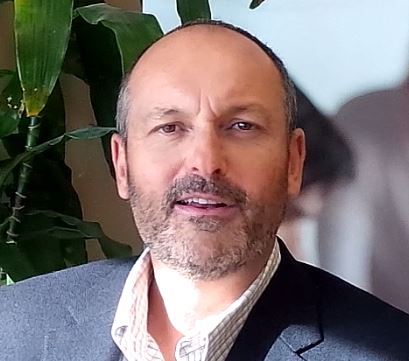This isn't a race, it's a marathon, and you need a plan to engage employees.
First, we need to understand where we are. The forming–storming–norming–performing model of group development was first proposed by Bruce Tuckman in 1965. Tuckman said that these phases are all necessary and inevitable in order for the team to grow, face up to challenges, tackle problems, find solutions, plan work, and deliver results. At BI WORLDWIDE, we are all about helping our clients change behaviour and drive measurable results.
Frankly, with all of the negative news, your teams would like to celebrate some positive results too while we try and understand what the “next normal” might be.
It feels like we are in the norming phase in many cases. We have been at home for a while. We have our workspace sorted out, and we are coming to grips with the idea that we need to get used to this because, in some cases, this is where we are working until there is a vaccine.
In other cases, companies have shifted to work from home permanently. Those that may not want to work from home have an additional challenge — it may not be what you signed up for, but it is what you have to face.
Global unemployment is at its highest level since the Great Depression. No one is voluntarily leaving the safety net of having a job. As a result, disengaged employees will stay, and it will affect performance. Further, there are some mission-critical positions that are in high demand. You want them to stay.
Employee engagement is what happens when companies win over the hearts (emotional connection) and minds of employees in ways that lead to extraordinary effort and positive financial results.
Why does that matter?
- Companies in the top quartile of engagement scores had a 50% higher total shareholder return than the average company. (Aon Hewitt)
- Engaged employees have 18 percent higher productivity and 60% higher quality than under-engaged employees. (Insync Surveys)
- Companies with highly engaged employees score between 12–34% higher in customer satisfaction ratings. (Vance)
- Each incremental percentage of employees who become engaged predicts an incremental 0.6% growth in sales. (Aon Hewitt)
- Engaged employees are 87% less likely to leave an organisation. They are 5 times less likely to leave than employees who are not engaged. (Dr Brad Shuck)
How do we keep motivation high and sustain it?
The key is to understand the behaviour that you are trying to reinforce. Many times they are related to company values like teamwork, service excellence or achievement of certain metrics.
- How has that changed in our situation today?
- Are there some behaviours that have become more of a priority with so many teams working remotely or taking on additional tasks?
We have become more agile. It's time to do an audit of recognition activity and determine what makes sense today. Often there is a blend of recognition tactics – some virtual and some in-person. Peer-to-peer, manager-to-peer, and length of service recognition can easily be executed with a recognition solution. And can also be showcased with pride on recognition walls and social media if you have the right solution.
Leaders are key to success. Keeping motivation high is reciprocal and starts with you. What goes around comes around. What happens when you recognise an employee's desired behaviour? You start a cycle of success that's grounded in the science of behavioural economics.
It works like this:

- The employee you recognised experiences the dopamine effect, a rush felt after something good happens.
- He or she feels valued and appreciated, which leads to enhanced subjective well-being or perceived happiness.
- Your employee repeats the desired behaviour to feel the beneficial effects of recognition and, in turn, becomes more engaged and motivated.
A well-planned recognition strategy includes a variety of recognition tactics and frequency.

When an employee recognises their colleagues (peer-to-peer), it fosters genuine appreciation and teamwork – particularly now when many employees are isolated from their traditional workmates. Out of sight should be out of mind, particularly for leaders. Many may not be used to leading remotely. It's important for leaders to ramp up communications and engage teams and individuals more frequently than they might have six months ago.
Managers matter.
Managers' ability to effectively reward and recognise achievement can increase employees' discretionary effort and intent to stay with an organisation by up to 22.7% and 31.6%, respectively. This results in increased performance and improved retention, thereby improving shareholder return. (Source: Corporate Executive Board)
Now that leaders understand that recognition is a priority, they must ensure they have the tools they need to fit the situation. Recognition solutions can provide ease of use and the ability to track and monitor recognition, budget allocation and spending. Analysis against business results can be quite revealing for your leaders.
Some of the most common recognition tactics include:
Manager discretionary recognition
Manager discretionary recognition with or without reward points. We all want to know that our leaders appreciate the effort that we are putting in. A recognition with a personal comment from a leader has a material impact on level of commitment and intensity of that commitment. Adding discretionary reward points magnifies that impact.
Service award contributions
Service award contributions can be fairly generic. Typically, a corporate and leader message is included with a service award. Good leaders can change things up and make it current, fun, social, and personal with observations and comments relative to the employee's tenure.
Contests
We all like to win. Creating competitions with measurement and recognition are great ways for managers to create excitement and focus to a given task or specific objectives—for a limited period of time—to inspire people to change behaviour or perform at a higher level – and ultimately drive your strategies and deliver targeted results.
Nominations
We all like to be recognised by our peers or supervisor and to know that our efforts have been noticed. Creating a formal framework for contributions from teammates with specific criteria can really help align behaviours and provide a platform to celebrate key contributions.
Reporting and analytics
Reporting and analytics is the key to understand the impacts of recognition and reward tactics. Intuitively, managers know what they think is going on around them. On occasion, our interpretation is clouded by our beliefs our expectations. We need to really look at the data. Once they understand what has actually happened—based on data—it can provide great insights for manager coaching and program corrections.
In reality, managers are busy and have a lot of demands on their time. In many cases today, managers have taken on more from afar and sometimes don't remember to recognise their teams. Innovating on our DayMaker recognition solution, Recognition Advisor is a simple and smart “personal assistant” providing Managers key insights, guidance and encouragement to recognise their employees beginning the day they start and throughout their entire work life cycle.
Using data algorithms and behavioural science principles, Recognition Advisor continually informs managers of the precise point in time at which giving recognition will have the most impact on an individual employee's satisfaction. Based on each employee's personal data and recognition history, Recognition Advisor nudges managers to recognise employees during these opportune times. Either online or via our EZ Thanks app, Recognition Advisor is fun, fast, and easy for managers to maximise the positive impact sending recognition has on your employees.
Communication counts.
A recognition program shouldn't be a surprise! A relevant theme coupled with a strong, sustained communications campaign is critical to the success of any program. People remember things that are graphic or dramatic, known as vividness.
Key considerations:
- The communication plan should target the entire impacted audience – sales and support representatives, frontline managers, leadership, and other key stakeholders.
- Make some noise and grab attention when you announce the program.
- Outline all of the components, raise awareness, and inspire employees to participate.

I said it before, managers matter, involve leaders. Drive engagement and support with messages from frontline managers and senior leadership. Participants especially appreciate seeing executive involvement. It sends a strong message. Don't rely solely on platform technology or digital communications. We are all bombarded with digital communications; you need to cut through the clutter in the beginning, throughout, and at the end. Hold kick-off and celebration activities. These provide a fun way to create excitement and momentum.
Have regular follow-up communications with performance updates. Get that webcam on! We tend to judge our success in comparison to others, known as relativity bias. Keep the program front and centre, and encourage active participation with contests and sweepstakes; some work and some fun – photo contests, theme days, and more.
Remind participants of the ways to participate, celebrate and share recognitions and achievements, and promote successes. You can't over-communicate. Finally, share the great individual and team-based stories. Inform participants and thank them for their contributions.
Think of creative ways to make the recognition program memorable. Why not surprise everyone with a themed program package to their home?

We actually want to do more than sustain the current situation. Status quo isn't enough.
Even more today, recognition can help you achieve important impacts in your business while sustaining inspiration in your teams. Other valuable outcomes include:
Building loyalty
Studies conducted in all industries and in companies both large and small consistently show that employees choose to stay with an organisation that makes it a point to communicate the simple message: “You matter.” Today more than ever, we are looking for meaning.
Increased performance
Most workers find a “comfort zone” of acceptable performance. Knowing they will be recognised for their improved performance pushes employees to strive for the next level. The next level is what you are going to need everyone competes for market share in a very uncertain economy.
Improved morale and employee attitudes
Recognition creates a positive work environment. Attitudes spread quickly. Inspired and energised employees serve as unassailable role models to co-workers. There have been lots of stories and proud moments over the past months. We have learned a lot about each other and ourselves.
Enhanced productivity
Employees who are recognised regularly work smarter and more effectively. They better understand what is expected and will work diligently to meet or exceed those expectations. As companies have redeployed workforces and had to economise and reassess their business plans, many are more aware than ever of their personal impact in driving business results.
Reduced turnover
In the midst of redundancies and reduced work hours, there are key roles that are imperative for business continuation. Many of these people are in demand. We know from our study of over 30,000 employees, that turnover is 17.7 percent less among employees receiving at least one recognition throughout their eligible program tenure. There is a correlation between frequency of receiving recognitions and turnover.
Employee turnover decreases as frequency of recognitions increases. There was a time when the trend was that working from home reduced turnover. However, it remains to be seen what the impacts will be when we are working from home not by choice. Recognition will be a key tactic in retention and keeping remote employees connected to your brand.
While we're becoming accustomed to our surroundings, there is still much at play that will impact what's next. Some of us don't want to return to the office. Only one-third of Canadians working remotely expect to resume working from the office as consistently as they did pre-pandemic, while one-in-five say they will remain primarily at home, according to a June study from the Angus Reid Institute.
There may be implications on both sides of that choice. Facebook's Mark Zuckerberg recently hosted a town hall meeting where employees have been given a deadline to inform the company about their location, so it can properly complete taxes and accounting and use virtual private network checks to confirm staff are where they claim. “That means if you live in a location where the cost of living is dramatically lower, or the cost of labour is lower, then salaries do tend to be somewhat lower in those places," he said on the video conference, where he announced more employees would be allowed to work remotely permanently.
Some companies are reassessing their real estate holdings accordingly. Some are taking those savings and buying furniture and office equipment to ensure that employees have a positive and productive workspace.
Regardless of today's uncharted waters, the reality is employee engagement is reciprocal. We get what we give on both sides. As we all try to find the right formula for success, creating a framework to celebrate success has been proven to increase performance over and over again. As we all find a balance and turn our attention to competing business metrics, those new processes that drive results will become the next normal.
Find an employee engagement program that delivers results.
enquiries@au.biworldwide.com | +61 2 89085600
Redefine how you define employee engagement.

















